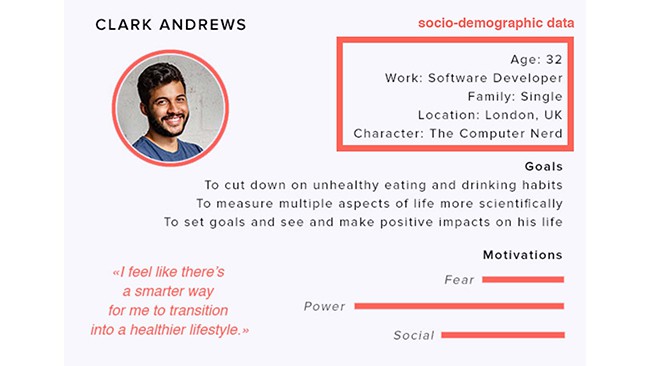Each of your customers are different: some make larger purchases, purchase more frequently, or are more receptive to your marketing efforts than others. With customer scoring, each of your customers is given a score based on criteria specific to your business. Scoring helps to improve your marketing performance by focusing your efforts on customers with...
Each of your customers are different: some make larger purchases, purchase more frequently, or are more receptive to your marketing efforts than others. With customer scoring, each of your customers is given a score based on criteria specific to your business.
Scoring helps to improve your marketing performance by focusing your efforts on customers with the highest conversion potential. Find out more about customer scoring is and how it can benefit your company.
What is customer scoring?
Customer scoring is a technique in which a score is attributed to each customer in your database. It’s based on two key ideas:
- Not all customers are alike. You may want to focus your marketing efforts on certain customer profiles, as some of them are more likely to make purchases, have a larger average basket size, shop more frequently, have a higher customer satisfaction score, etc. Customer scoring enables you to identify these customers.

- Successful marketing means setting priorities. The goal is to improve your performance by focusing your marketing campaigns on the customers that are most likely to make a purchase.
It aims to improve your marketing performance by focusing your campaigns on customers with the highest purchasing potential.
Scoring consists in ranking your customers according to their level of interest in your offers, their buying behaviour, or their likelihood to respond positively to solicitations. Scoring criteria can vary greatly from one company to another and should be based on your objectives.
How do you set up your customer scoring?
Customer scoring is based on the segmentation of your customer database
Customer scoring draws on customer data. The score assigned to each of your customers is calculated from the data you have on them. You can use all types of data to build a scoring system:
- Socio-demographic data: age, sex, marital status, profession.
- Psychological data: interests, opinions.
- Behavioural data: purchase history, data of last purchase, purchase frequency, website behaviour, number of customer service complaints, email response rate, etc.
If you are not familiar with these data categories, read our article: 3 criteria to know to correctly segment your customer database

Creating your customer scoring approach
Many different methods can be used to calculate customer’s score. These are based on mathematical rules and weighting systems for the various different criteria included in the calculation. Most data management software offers a scoring function, using its own method.
Some of these scoring methods have been standardized. One example is RFM scoring, which determines customer purchase probability based on three criteria: Recency (date of last purchase), purchase Frequency and the Monetary value of purchases.
The relevance and accuracy of your customer scoring results depend on selecting the right criteria based on your goals, as well as choosing the right tools to calculate these scores.
What are the benefits of customer scoring?
The primary objective is to enable you to focus your marketing activities and campaigns on the customers that are most likely to respond favourably to your efforts (by converting or making a purchase).
It allows you to rank your customers based on criteria that are relevant to your business, and thus optimize the ROI of your marketing campaigns.
But customer scoring is used differently from one sector to another, and different companies have different objectives. In the banking and insurance sectors, for example, scoring is used to assess customer risk (credit scoring) and to calculate the rate or collateral for a loan.
In marketing, it is typically used to evaluate the likelihood that customers will make a purchase, and target customers that have the highest potential to convert.
But it can also be used to adjust marketing pressure – by calculating scores based on the number of marketing communications received by the customer.
Customer scoring also enables you to organize your customer database using a category system. This approach complements customer segmentation techniques.
Note: while customer scoring is a key indicator that helps you better understand your customers, it’s even more important to track changes to customer scores. Many companies use “derivative” scoring methods to determine how customer scores change over a period of time.
How customer surveys can help you enrich your customer scoring strategies?
Behavioral data is typically sourced from your CRM. Basic sociodemographic information is generally provided by customers when they register for a loyalty program or make an online purchase. However, obtaining more detailed sociodemographic and behavioral data can be challenging. We recommend using customer surveys to do this. You’ll be surprised how many of your current or prospective customers are interested in sharing their opinions.
To more clearly illustrate how surveys can help you, here’s a concrete example: imagine a travel agency that only offers travel by plane. To help determine their visitors’ customer scoring, they could use a survey such as the following:

- For the question “What will be your next travel destination?“, participants are given different scores based on their answers. A customer who answers “Egypt” will be given a higher score, as the average basket is larger.
- The second question provides you with sociodemographic data, indicating the family status of the prospective customer. In this example, the agency chooses to attribute a lower score to the “Alone” option, because their offering is primarily family-oriented.
- The method of transportation is the key piece of behavioral data. The negative score attributed to travelling by car allows the agency to direct their focus away from customers who are not in the target audience for their agency, and instead focus their efforts on prospective clients who intend to use specific methods of transportation.
In this example, the travel agency’s marketing efforts will be focused on Sonia, as their offering is most likely to be of interest to this customer.
Customer scoring is therefore only successful if you have sufficient customer data. This is why it’s important to increase your customer knowledge before implementing strategies for your customer database. CX Management offers an efficient, cross-channel solution to help you collect customer data, using intelligent surveys.
Customer scoring enables you to make the most of your customer database. Looking to optimize your marketing performance? We highly recommend implementing a customer scoring strategy!








